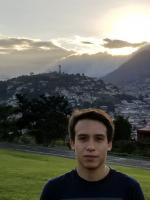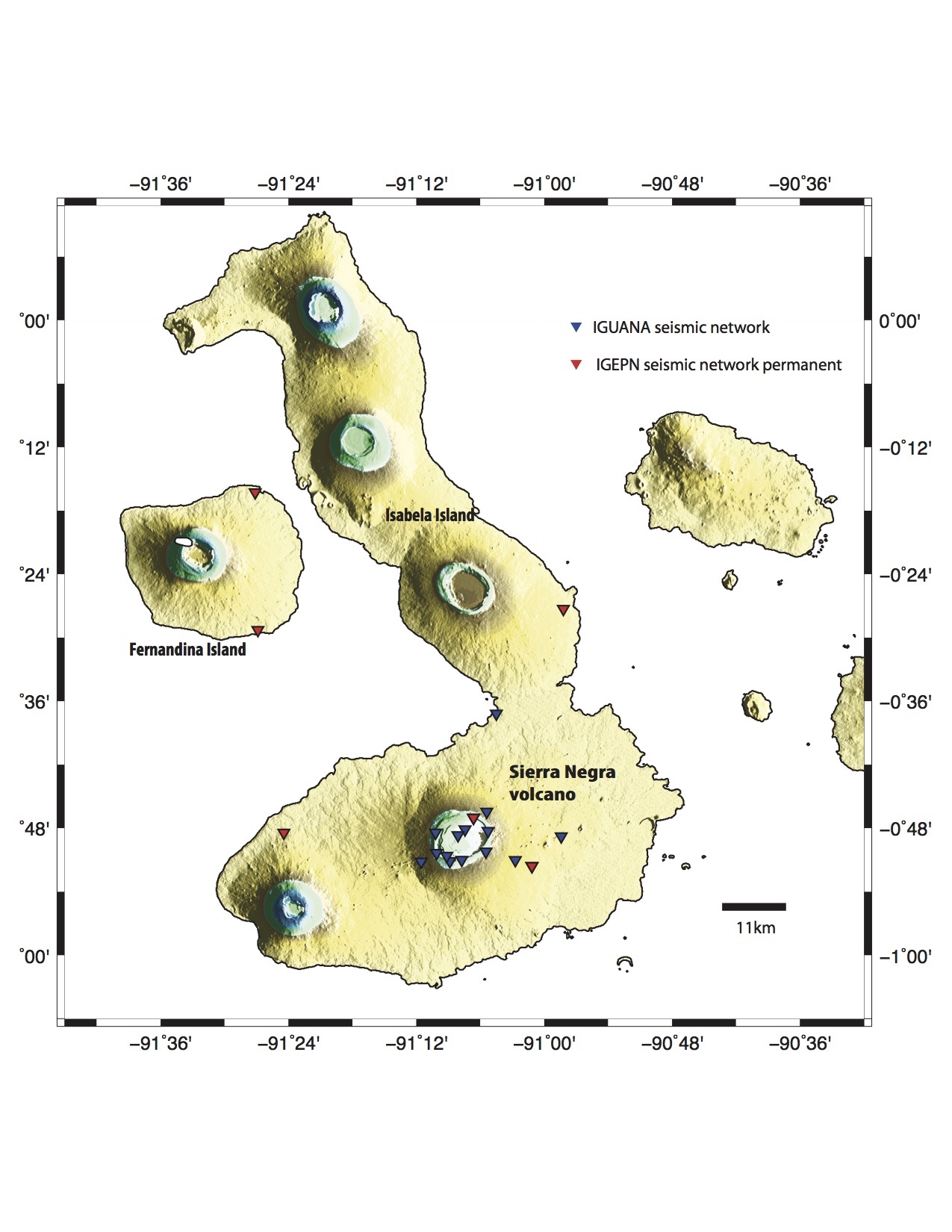Mario

Mario is a student at Universidad Nacional de La Plata currently completing his research at Tulane University under Dr. Cynthia Ebinger.
For this project I will be analyzing possible changes in seismic velocity between station pairs due to the eruption of June 2018 of Sierra Negra volcano (Ecuador). In order to do this I will work with ambient noise and will be doing wave cross-correlations. Since I am from Ecuador this project is very special and interesting for me.
Week 7
July 29th, 2019
The biggest challenge that I faced this summer is learning when to ask for help. I had a lot of problems early on with inputting the data to the software that computed the cross-correlations. Knowing when I should ask for help or when I should keep trying to find a solution by myself has been hard for me. I got better at this by better understanding the data and the software. To do this I had to learn about Obspy and MySQL.
After I managed to input the data into the software, the next challenge that I faced was knowing which parameters I should use to compute the cross-correlations and then the velocity changes. To overcome this challenge reading papers that applied the same technique was useful as well as understanding the geological context of the region that I am working on.
I finally got the first velocity variation plot corresponding to the ZZ component. The eruption was June 26, so you can see how there is a decrease in velocity (0.04%). To compute these changes a reference time period of three months was taken (April 1-June 1) and a moving window of 20 days. In the plot, the velocity changes for all station pairs were averaged. The next step is taking out some station pairs that are not very useful and modifying the parameters used based on the coherency of the scatterers. I am looking forward to this!

Week 3,4
July 3rd, 2019
This blog entry is late because I spent the last week in Baton Rouge and Shreveport Louisiana. I was invited to take part in a project named ISLA among Tulane University, Louisiana State University and University of Louisiana at Lafayette. The goal of the project is to study background seismic activity in north-west Louisiana, to do this 10 broadband seismometers were installed around Shreveport. The first couple of days we had training from IRIS Passcal staff and then we deployed the seismometers in strategic locations. This was a great experience because I learned about practical seismology and had the opportunity to share and learn from very bright people like Dr. Patricia Persuad (LSU) and Dr. Gabriele Morra (ULL).
The assignment for the third week was to practice an elevator speech. I have done this since I started working in Tulane because all the summer interns in the department have a weekly meeting to share updates on our work. These meetings are great to get to know other interns and to discuss the struggles that we are going through.
One challenge that I am currently facing is to remove the instruments' response from the seismic data. The problem is that the code that remove the instruments' response, does not match correctly the response file with the corresponding miniseed file. This is very important for my project since I will be doing cross-correlations between station pairs that does not have the same instrument type. One challenge that I overcame in week 3 was that I managed to upload the entire database of my project into the software that will be used (MSNoise). This was done after weeks of frustration installing MySQL and getting MySQL to link with MSNoise.
I did a map with the all the stations using GMT. I was already familiar with GMT but used a grad students' code as a reference to do this map.



Week 2
June 19th, 2019
During my second week at New Orleans I read the theory for ambient noise analysis. I also did an Obspy tutorial and started creating the database for the seismic events in Sierra Negra using MySQL.
The data that I will be using was recorded from 14 temporary broadband stations installed around and inside the caldera (4 of these stations belong to Tulane University) and 6 additional stations that are part of the permanent seismic network of the Instituto Geofisico (Ecuador). The station distribution and the time period offers a good opportunity to apply modern techniques using ambient noise.
One of my goals for this summer is to explain how my research project will contribute something new to existing knowledge. Previous studies have shown Sierra Negra's internal structure, by knowing seismic velocity variations inside the volcano before, during, and after the eruption period we could have a better understanding about how magma is transported during the eruption, where the magma is coming from, and the extension of the magma reservoir.
First week!
June 13th, 2019
My first week in New Orleans has been great, everyone in Tulane has been so nice and helpful. Once I arrived I met with my advisor Dr. Ebinger, who showed me around campus and we also discussed about my goals for the next couple of weeks. The graduate students took me around the city and if I had a problem they were always eager to help me. This past week my main goal was to start working with the data, so I did earthquake locations for different events that happened during the eruption period. To do this I found P and S wave arrival times at different stations. I also found event characteristics using spectrograms and compared them with events recorded a couple of years before the inflation period. Saturday I went to the French Quarter which was a really cool experience and I definitely plan to go back. My goals for the summer are the following:
- learn shell scripting and get comfortable using Obspy
- try to find patterns that can help foresee an impeding eruption
- realize when to ask for help and when to solve a problem by myself
- prepare my AGU abstract
- bring back new tools for better analyzing seismic activity that occur before an eruption
- learn more about the culture in New Orleans (traditional food, architecture, history and music)
- make new friends that will last once my internship is over


